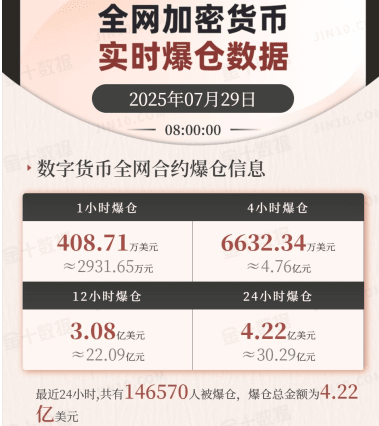A large bearish candle smashed 3 billion in liquidations, but whales are grinning in the shadows—the script has long been written.
Yesterday at 1:50 PM, ETH broke through 3940 USD, setting a new high for the year! The entire circle instantly boiled over, with cries of 'the bull is back' flooding the community. But before the excitement could settle, the market suddenly changed, plummeting nearly 200 points, dropping straight to 3751 USD by 2 AM today, resembling a 'mountain pressing down'.
The market is now tightly coiled around the 3780-3800 area, with both sides secretly competing for chips. Will they continue to push down, or will they make a bold move to battle for 4000 again? Experienced traders understand: at times like this, focusing on the hands of the whales is more reliable than watching the K-line.

1. The culprit behind the crash surfaces: could the favorable tariffs actually be a 'smoke bomb'?
On the surface, the crash was caused by the 'buy the rumor, sell the news' effect following the implementation of the US-EU tariff agreement—on July 28, the US and EU announced tariff reductions, pushing the market up to 3940. But when the news landed, the positive sentiment was exhausted, and profit-taking immediately led to a sell-off, resulting in over 3 billion in liquidations across the network within 24 hours.
However, digging deeper into on-chain data reveals that the script is not that simple.
On the eve of the crash, Ethereum's PoS exit queue suddenly soared to 743,800 ETH (worth over 2.9 billion USD), creating historical congestion! Withdrawal delays exceeded 12 days, leaving staked whales unable to escape.
However, the reserves of ETH on exchanges sharply decreased, with platforms like Coinbase seeing their inventories plummet to freezing point—this play of 'smashing down while secretly absorbing' is well understood by seasoned investors.
What's worse is that the staked derivatives stETH and rETH are experiencing a crazy run on withdrawals, and liquidation alarms are ringing throughout the DEFI protocols.
It turns out that the favorable tariffs were just a trigger; the real thunder had long been buried in the staking pool.
2. The bottom cards of the bulls are exposed: 460 million in ammunition is ready, just waiting for the sound of a gunshot.
Don't be scared off by the large bearish candle! Looking at the data, the main forces have not pulled back; instead, they have been aggressively accumulating during the crash.
Institutional bullets are still firing: in July, funds flowing into Ethereum ETFs reached 4.67 billion USD, crushing Bitcoin's net outflows.
A mysterious whale consumed 108,000 ETH in a single day (worth nearly 280 million USD), with on-chain transfers pointing directly to a custodial cold wallet—this clearly shows a determination to lock up assets and wait for a surge.
Technicians have discovered key signals: the daily 'bull flag breakout' formation has formed; as long as the dual support levels of 3754 USD and 3680 are held, the target points directly to 4800 USD!
Looking at the derivatives battlefield: the long-short ratio for Binance's large accounts has soared to 3.07, with institutions holding over 75% of long positions; ETH open contracts have surpassed 59.4 billion USD, with leveraged funds itching to make a move—this clearly indicates a bet on an epic short squeeze.
3. The secret order from the sensor: the 4000 level is not the end, but a 'launching pad'.
Currently, both bulls and bears are locked in a brutal battle in the 3780-3800 range, but several deadly hints have already begun to emerge.
The staking thunder has not been cleared: 740,000 ETH exiting the queue hangs over like a sword of Damocles; if congestion eases, it could trigger a second wave of selling pressure.
A regulatory black hand strikes: as the GENIUS Act just categorized ETH as a 'commodity', the SEC immediately turns its focus to staking service providers, with policy guns potentially swinging at any time.
The technicals hide danger: the RSI dead cross points downwards, the 4-hour MACD turns green but volume shrinks; if 3780 cannot be held, the next stop could be 3447.
But what truly excites the main forces is that the crash has released leverage risk.
The day before yesterday, the open contracts for ETH piled up to 59.4 billion; after exploding 3 billion today, it has actually alleviated the selling pressure for breaking through 4000— the harsher the washout, the more fierce the pump; this is an eternal iron law in the crypto world.
4. The next scene: will it be 'the bold move' or 'free fall'? Keep an eye on these three signals.
In this big game, retail investors must understand the body language of the whales to survive.
Staking exit queue: if the number drops below 500,000 ETH, the alarm will be lifted, and the surge channel will be reopened.
Exchange ETH reserves: continued decline = whales accumulating, sudden surge = countdown to sell-off.
4-hour EMA defense line: holding 3750 firmly means a declaration of bullish sentiment.
The internal model of the sensor has issued orders: start bottom-fishing in batches below 3750, place orders at 3680! Set stop-loss at 3640, with a target of breaking through 4000 for further accumulation, and the ultimate prey at 4800.
The market always finds a bottom in panic and perishes in madness. After yesterday's dramatic drop, the amount of ETH on exchanges decreased instead of increasing—whales silently picked up the bloodied chips from retail investors during the sell-off. On-chain data tracked that a long-dormant ancient address suddenly transferred 72,000 ETH to Binance, yet set a limit sell order at 3880... Is this a smokescreen before a pump or the beginning of a new round of slaughter?